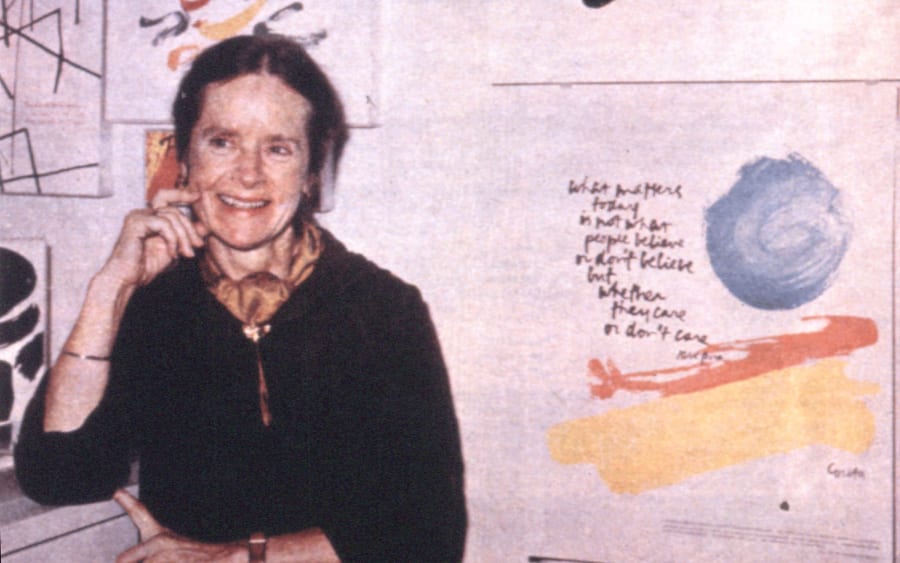In collaboration with Numéro art
In spring 2018, the American artist Martine Syms spent a month in Paris, and used the opportunity to screen Laughing Gas (2016), a video from her ‘She Mad’ series (2015–21). In this project, made up of short vignettes, the viewer sees her alter ego navigate the myriad pitfalls of everyday life. After watching for a while, one gets the impression that these filmed trifles, at once mundane and uproarious, have been scripted by the entertainment industry: a sense of déjà vu prevails, in both the situations and the narratives. This is precisely the artist’s material and vocabulary – the media-fueled landscape from which there is no escape and which constitutes the collective unconscious of a connected humanity.
From silent films to Hollywood and TikTok, everything is already filled with images, buffoonery, and theatrics. But on closer inspection, the rest becomes clear: how a young Black woman exists in the creative industries and major cities; how she, who grew up round the corner from Hollywood, in the era of the first blogs, inherited their codes and appropriated their narratives from within. So, in the late spring of 2018, when Syms showed her new video, she wondered how it would be perceived by French audiences. Though the Gallic public may have been partly raised on a diet of American pop culture, it possesses its own way of digesting media, informed by other dynamics of gender, race, and class.
‘I’m interested in the distribution of cultures, particularly Afro-American culture,’ says Syms, back in Paris again after 6 years. ‘I feel things change very quickly here, which is super exciting. I’m always curious to show my work in varied contexts, since that adds a layer of meaning.’ It is early summer 2024, and she is working on ‘Total’ at Lafayette Anticipations, her first French institutional show. Naturally she thinks back to Laughing Gas: ‘When I first showed the film here, people were puzzled,’ she recalls. The video is inspired by a mishap that happened while at the dentist to have her wisdom teeth removed. Everything was going fine and the anesthetic was starting to take effect, when suddenly the medical staff interrupted the procedure: her health insurance was not in order. Either she paid immediately, or she left. In the video, her alter ego leaves with her teeth intact, hysterical with laughter. This time around, Laughing Gas has had more success than on its first French screening, the cinematic mechanisms of universal hilarity prevailing after all.
Born in Los Angeles in 1988, Syms studied at the School of the Art Institute of Chicago and at Bard College, New York. From an early age, she was keen on reproducible images – her father was an amateur photographer, and she tried out Lomography as a teenager. It was also the time of the first blogs and the beginnings of reality TV, in particular MTV’s The Real World, which inspired one of Syms’s very first videos, My Only Idol is Reality (2007), the earliest work being shown at Lafayette Anticipations. ‘Two characters are arguing about politics. The discussion revolves around two presidential candidates. There’s a white woman and a black man, and each represents a well-defined identity,’ explains Syms, who was fascinated by the show as a child. ‘I played the same extract end to end on two VHS tapes until the image deteriorated just like the discourse, which went round in circles.’ The main components of her work are already present in this piece, in embryonic form: ‘Archetypes, the media, and repetition.’
The concepts of repetition, remakes, and recrafting are also a way of deciphering the layout of ‘Total’, in which the six videos shown work in pairs. My Only Idol is Reality goes together with A Pilot for a Show About Nowhere (2015), which opened the ‘She Mad’ series and marked Syms’s transformation into an archetypal character. Next comes Lessons (2014–18), another key project, which is made up of 180 30-second shorts accompanied by a text, ‘a bit like anti-advertising.’ For her art-film teachers at the time, Lessons was unclassifiable, in other words absolutely ‘unshowable’ at festivals.
But it did not matter; this was when Syms emerged with a bang on the contemporary art scene, showing at the New Museum Triennial in 2015, London’s Institute of Contemporary Arts in 2016, and the Museum of Modern Art, New York in 2017. The only problem was that she felt too confined by post-Internet and Afrofuturism, the circles that lauded her. So she continued developing her own voice, full of scathing irony. In her work, the trials and tribulations of everyday life are recounted in point of view shots, in fast motion, and at ground level: here we can see how media representations are as perversely devious as they are delightful. A mirror image of Lessons can be found in The Non-Hero (2021), whose script was inspired by TikTok. Syms, who seems to have anticipated this ultra-short format, uses Lil Nas X’s account as a framework, where the rapper posts his ‘life stories.’ ‘I’ve barely changed his stories to talk about the art world, but the format is so recognizable that some of my friends thought I was talking about myself. The main idea always remains the same: how an experience is narrated and essentialized.’
The character ‘Martine Syms’ is now a part of virtual reality. In 2018, the artist created an avatar of herself in a game engine, presented in an off-the-wall opera, DED (2021). With Meditation (2021), the spectator enters her mind, guided by an avatar that is a cross between her artistic persona and a cartoon DJ who was popular when she was growing up.
At Lafayette Anticipations, all these videos are showcased in an environment that reflects her way of transforming exhibition venues into a complete multimedia collage. From floor to ceiling, nothing is left blank: drawings, collages, and customized furniture cover every surface. As well as an aesthetic statement, this is a modus operandi – a functioning concept store. Many people are unaware that Syms embraced retail aesthetics right from the start. ‘When I left school, I set up a self-managed space in Chicago,’ she recalls. ‘It was called Golden Age.’ At ‘Total’, visitors can buy T-shirts, caps, Nalgene water flasks, and sheets of stickers. Thanks to her distinctive humor, Lafayette Anticipations appears reflected in its own alter ego, a character named Galeries Lafayette. Syms comes full circle, clear-headed about the co-optation mechanisms that are part and parcel of any art practice or attempt at self-definition, which never happens in a vacuum. ‘At the time of Golden Age, people kept asking me if the concept store was an artistic project. At first I said no. And then, gradually, I realized that yes, of course it was art.’
This article is part of an ongoing editorial collaboration with Numéro Art. You can read the original article here.
Martine Syms is represented by Bridget Donahue (New York), Sadie Coles HQ (London), and Sprüth Magers (Berlin, London, Los Angeles, New York).
Martine Syms
‘Total’
Lafayette Anticipations, Paris
Until February 9, 2025
Ingrid Luquet-Gad is an art critic and PhD candidate based in Paris. She teaches art philosophy at Université Paris 1 Panthéon-Sorbonne.
English translation: Numéro Art.
Caption for header image: Installation view of Martine Syms’s exhibition ‘Total’, Lafayette Anticipations, Paris, 2024. Photograph by Aurélien Mole.
Published on November 29, 2024.


